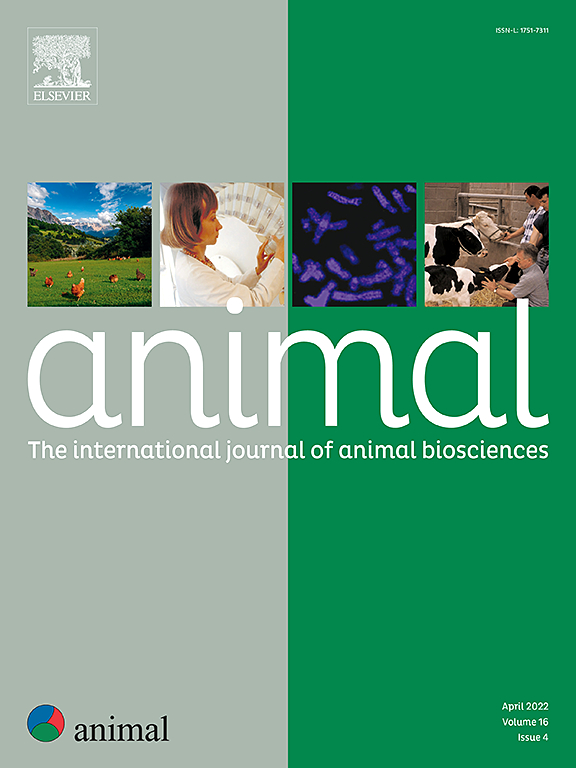Assessing learning, behaviour, and stress level in goats while testing a virtual fencing training protocol
IF 4
2区 农林科学
Q1 AGRICULTURE, DAIRY & ANIMAL SCIENCE
引用次数: 0
Abstract
Virtual fencing (VF) is a modern fencing technology using Global Positioning System-enabled collars which emit acoustic signals and, if the animal does not respond, electric pulses. Studies with cattle indicate successful learning and no distinct negative impact on the animals’ behaviours and stress level. However, the number of studies testing VF with goats is relatively small. In this study, we used VF collars to test a VF training protocol recently applied to heifers to assess the development of goats’ learning to avoid the electric pulse, their behaviour, and faecal cortisol metabolites (FCMs) as an indicator for physiological stress in a grazing experiment. Twenty adult ‘Blobe’ goats with offspring were divided into two groups and assigned to the VF or physical fencing treatment in a cross-over design with two periods of 12 days each. The VF treatment involved a virtual fence at one side of the paddock, to which the goats were gradually introduced over the first 2 days (additional physical fence or posts as visual support). On day eight, the grazing areas were enlarged by shifting the virtual fence and one side of the physical fencing treatment. The experiment lasted 4 h per day. During this time, the following behaviours were recorded via instantaneous scan sampling of all goats every 2 min: grazing, lying, standing, standing vigilant, walking, and running. Additionally, faecal samples were collected once, or twice daily and FCM concentrations were measured. The VF collars delivered the number of acoustic signals and electric pulses and the duration of the acoustic signals. The daily number of acoustic signals and electric pulses of each goat was used to calculate a ‘success ratio’. A significant increase in the success ratio and a general decrease in the signal duration indicate the successful association of acoustic signals and electric pulses at the group level. Behavioural analyses revealed no clear influence of the VF treatment except for standing vigilant. Virtually fenced goats stood significantly more vigilant than physically fenced ones. However, free-moving kids could have had an influence. The VF treatment had no significant effect on the FCM concentrations, which decreased significantly over time. In summary, goats showed signs of learning when avoiding receiving electric pulses by responding appropriately to the acoustic signals. A higher occurrence of vigilance behaviour may suggest insecurity, but FCM concentrations did not indicate increased physiological stress. Future research needs to confirm these results and test VF with goats under practical conditions.
求助全文
约1分钟内获得全文
求助全文
来源期刊

Animal
农林科学-奶制品与动物科学
CiteScore
7.50
自引率
2.80%
发文量
246
审稿时长
3 months
期刊介绍:
Editorial board
animal attracts the best research in animal biology and animal systems from across the spectrum of the agricultural, biomedical, and environmental sciences. It is the central element in an exciting collaboration between the British Society of Animal Science (BSAS), Institut National de la Recherche Agronomique (INRA) and the European Federation of Animal Science (EAAP) and represents a merging of three scientific journals: Animal Science; Animal Research; Reproduction, Nutrition, Development. animal publishes original cutting-edge research, ''hot'' topics and horizon-scanning reviews on animal-related aspects of the life sciences at the molecular, cellular, organ, whole animal and production system levels. The main subject areas include: breeding and genetics; nutrition; physiology and functional biology of systems; behaviour, health and welfare; farming systems, environmental impact and climate change; product quality, human health and well-being. Animal models and papers dealing with the integration of research between these topics and their impact on the environment and people are particularly welcome.
 求助内容:
求助内容: 应助结果提醒方式:
应助结果提醒方式:


